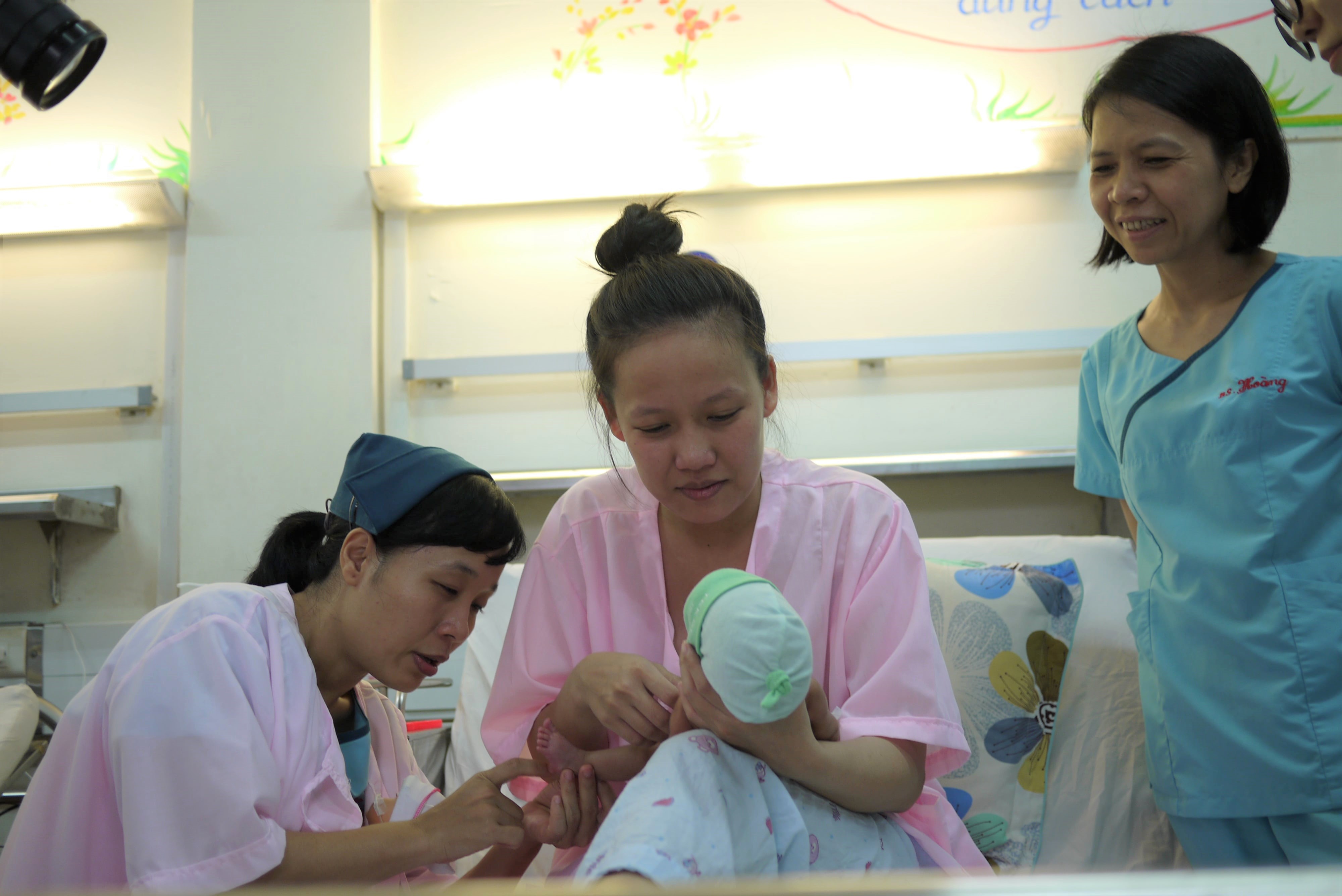When babies are born either vaginally or via caesarean section (C-section) at Da Nang Hospital for Women and Children in Viet Nam, children are immediately placed skin-to-skin on their mother’s chest. Receiving this “First Embrace” or skin-to-skin care not only keeps the baby warm, it helps initiate breastfeeding, ensures proper umbilical cord care and saves lives.
“Families and health-care workers love this practice because babies are kept warm, pink and healthy in their mother’s embrace,” says Dr Hoang Tran, Deputy Director, Da Nang Hospital for Women and Children.
However, the First Embrace has not always been standard practice. Prior to 2014, babies were routinely separated from their mothers after birth for at least 20 minutes if they were born vaginally and six hours or longer if they were born via C-section, and few practised skin-to-skin care.
In November 2014, the hospital introduced Early Essential Newborn Care, a simple set of WHO-recommended, cost-effective interventions, such as skin-to-skin contact and early and exclusive breastfeeding, to improve the quality of care for mothers and babies during and after childbirth. For babies born by C-section, WHO recommends additional interventions, such as the inclusion of neonatal resuscitation warmers in the operating room and drying cloths and baby hats in sterile delivery packs to prevent infection.
At the same time, the hospital, in partnership with WHO, began studying whether Early Essential Newborn Care could improve health outcomes for babies born via C-section. The study, recently published in the BMJ Open Quality journal, examined the health outcomes of 16 927 babies born via C-section before and after the hospital began to implement the recommendations, and found that the interventions worked.
“We saw that severe outcomes such as admissions to the neonatal intensive care unit (NICU), hypothermia and sepsis massively declined, while breastfeeding nearly doubled,” says Dr Tran. The study adds to the evidence that Early Essential Newborn Care is associated with the same improved outcomes regardless of route of birth.

Kangaroo Mother Care room in Da Nang Hospital for Women and Children in Viet Nam. ©WHO/Gato Borrero
Sepsis, a serious infection in babies’ blood, decreased hospital-wide by five times after Early Essential Newborn Care was implemented, while exclusive breastfeeding in the NICU nearly doubled. Additionally, NICU admissions of babies born by C-section decreased by a third amounting to an estimated savings of US$ 162 060 for the hospital in the first year of implementation. Hypothermia also declined by a quarter, and kangaroo mother care for preterm babies born weighing less than 2000 grams increased by a third.
“This study shows the why and how to ensure every baby receives early care. Early Essential Newborn Care should be continuously promoted for nationwide implementation for both normal delivery and caesarean section, even during COVID-19,” says Dr Kidong Park, WHO Representative in Viet Nam.
“Early Essential Newborn Care, including skin-to-skin contact, can be applied in operating rooms and drastically improves health and outcomes,” adds Dr Howard Sobel, Coordinator for Reproductive, Maternal, Newborn, Child and Adolescent Health in WHO’s Western Pacific Region and co-author of the study. “As caesarean sections are very common in countries in our Region, this is a particularly important study to ensure babies get the best possible care.”
To date, Early Essential Newborn Care has been successfully implemented in more than 6000 health-care facilities in nine countries in the Western Pacific Region and has expanded to 26 countries globally.




